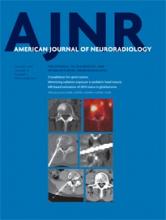We read with great interest the recent article by Che et al.1 In this article, the authors compared the efficacy, safety, and cost-effectiveness of surgery versus radiofrequency ablation (RFA) for the treatment of benign thyroid nodules. Two hundred patients were retrospectively selected for each group. The authors assessed procedure-related complications, the length of hospitalization, and cost. In addition, nodule volume, incidence of hypothyroidism, and the rate of residual nodules were assessed at 1-year follow-up. All of these outcomes uniformly favored RFA over surgery; the cost between the 2 procedures was not significantly different. Consequently, the authors advocated RFA as the first-line treatment for benign thyroid nodules.
We commend the authors for conducting the largest retrospective cohort study comparing these 2 treatment options for benign thyroid nodules. However, the result could be significantly confounded by patient-selection bias. The authors used different criterion standards to define benign thyroid nodules in the surgery-versus-RFA groups (surgery pathology and cytology from fine-needle aspiration, respectively). This patient-selection method excluded patients whose nodules were benign by cytology but malignant by surgical pathology in the surgery group. In fact, the potential of mistreating malignant nodules as benign ones is the strongest argument against RFA as the first-line treatment for symptomatic nodular goiter.2
Two studies in the literature compared surgery and RFA as a treatment for benign thyroid nodules. One is the current study.1 In the other study, the authors found that 8% of their patients (6 of 74) in the surgical arm were misdiagnosed as having benign nodules.3 Surgical pathologies in these patients later revealed malignant cells in their nodules.3 RFA did not allow any pathologic analysis of the nodules. On the basis of these results, the authors concluded that RFA was not a safe alternative to surgery for the treatment of hyperfunctioning nodules.
In a related study, Negro et al4 assessed the risk of undiagnosed malignancy in patients with multinodular goiter presumed to have benign thyroid disease and eligible for nonsurgical treatments. They found that 84 of 970 (8.6%) patients who underwent thyroidectomy had malignancy by histologic examination (5% incidental thyroid cancer and 3.6% false-negative fine-needle aspiration cytology).4 Although 67 of these malignant thyroid nodules (79.8%) were stage I disease by the American Joint Committee on Cancer criteria, the authors concluded that the risk of malignancy in presumably benign thyroid disease cannot be overlooked.
In another related study of 1161 patients who underwent total thyroidectomy for diffuse multinodular goiter, 252 (21.7%) were cases of thyroid cancer.5 In this study, the sensitivity of thyroid sonography and fine-needle aspiration cytology for cancer detection was only 30.3% and 64.1%, respectively. By preselecting patients who have benign disease on surgical pathology to compare with the RFA group, the current article effectively bypassed the most important question facing clinicians who need to discuss the pros and cons of the 2 approaches with their patients: What is the risk of a missed malignancy if I choose RFA over surgery? The consequence of such missed malignancy is currently unclear.
In conclusion, a randomized controlled trial is needed to compare the safety and efficacy of surgery versus RFA for the treatment of “benign” nodular goiter. If this is not feasible, long-term follow-up of patients treated with RFA is required before it can be recommended as first-line therapy.
Acknowledgements
This work was supported by the Natural Science Foundation of China (grant number 81301988) to Li Yang, and China Ministry of Education Doctoral Program Spot Foundation (grant number 20130162120061) to Li Yang.
Indicates open access to non-subscribers at www.ajnr.org
References
- © 2016 by American Journal of Neuroradiology












